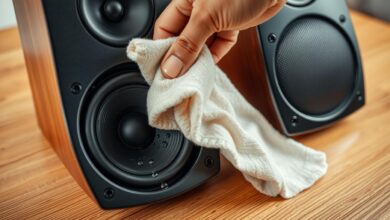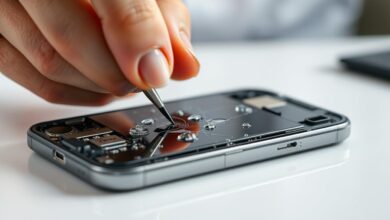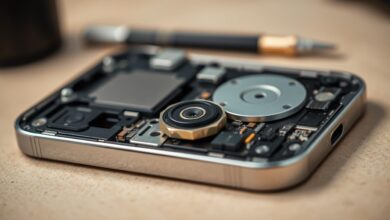how to fix speakers on iphone
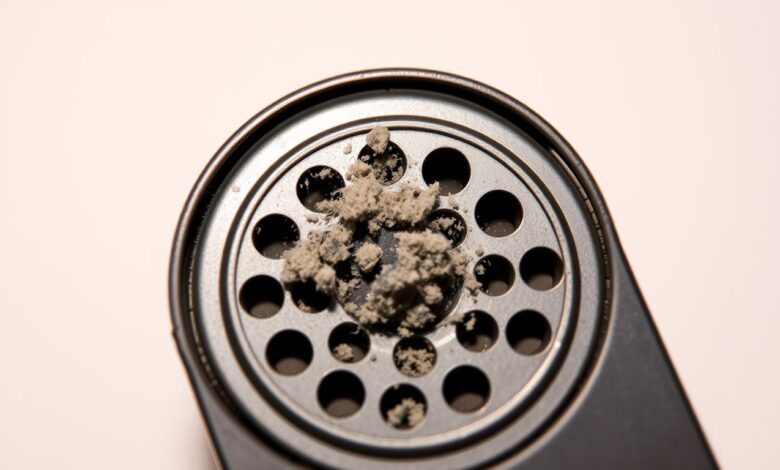
Having trouble with your iPhone’s speaker? You’re not alone. Many iPhone users deal with distorted audio or no sound. In this guide, I’ll show you how to troubleshoot and potentially repair your iPhone’s speaker.
Whether it’s iPhone speaker not working or other issues, this guide is here to help. By following these steps, you can fix the problem and enjoy clear audio on your device.
Key Takeaways
- Identify common causes of iPhone speaker issues
- Learn step-by-step troubleshooting techniques
- Discover potential solutions to repair your iPhone’s speaker
- Understand when to seek professional help
- Prevent future speaker-related problems
Understanding Your iPhone’s Speaker System
Knowing how your iPhone’s speaker system works is key to fixing problems. It uses both hardware and software to make great sound.
Different Speaker Components in Modern iPhones
Today’s iPhones have several speakers. There’s the earpiece for calls, the main speaker for music and videos, and sometimes more for stereo sound. The earpiece speaker handles calls, while the main speaker plays music and videos. Some iPhones even have dual or stereo speakers for better sound.
These parts work together to give you a great sound experience. Knowing their roles helps fix iPhone sound problems.
How Audio Processing Works in iOS
iOS has a complex system for handling audio. It includes stages like decoding audio and improving sound quality. This is done by the iPhone’s processor and special audio hardware.
To solve iPhone speaker troubleshooting issues, you need to understand this process. Knowing how iOS handles audio helps find problems like distorted sound or low volume.
Common iPhone Speaker Issues and Their Causes
Knowing the common problems with iPhone speakers is key to fixing them. These speakers, like any part, can face many issues that lower their quality.
No Sound or Low Volume Problems
Many iPhone users deal with no sound or low volume. This can be due to software bugs, like a stuck mute switch, or hardware problems like dirt in the speakers.
- First, check if the volume is low or if the mute switch is on.
- Look for dirt or dust in the speaker grills.
- For more help, visit an Apple support forum.
Distorted or Crackling Audio
Distorted or crackling audio can happen for many reasons. It might be due to software issues, hardware damage, or iOS audio problems.
- Try restarting your iPhone to fix any software bugs.
- Look for any damage or water issues that could harm the speakers.
- Make sure your iPhone is running the latest iOS version.
Speaker Cutting Out Intermittently
When an iPhone’s speaker stops working now and then, it could be a hardware or software problem. It might be a faulty speaker part or loose connections, or even software bugs.
- Check the speaker parts for any damage.
- Close apps that might be causing audio problems.
- If it still doesn’t work, you might need a professional fix.
Before You Begin: Preparation Steps
Before you start fixing your iPhone’s speaker, take a few steps first. This will help you troubleshoot smoothly and effectively.
Backing Up Your iPhone Data
Backing up your iPhone data is key. It keeps your important stuff safe, no matter what happens next. You can use iCloud or iTunes to back up your iPhone. Here’s how:
- Connect your iPhone to a Wi-Fi network.
- Go to Settings > [your name] > iCloud > iCloud Backup.
- Tap Back Up Now.
You can also back up with iTunes. Just connect your iPhone to a computer, open iTunes, and click Back Up Now under the Summary tab.
Gathering Necessary Tools and Materials
Having the right tools makes troubleshooting easier. You’ll need a soft cloth, a SIM ejector tool, and maybe a compressed air canister. Here’s what you might need:
| Tool/Material | Purpose |
|---|---|
| Soft cloth | Cleaning the exterior |
| SIM ejector tool | Removing SIM card tray |
| Compressed air canister | Cleaning speaker grills and ports |
Apple Support says, “Before you start, back up your device and get the right tools. This avoids damage or losing data.”
“The best way to predict your future is to create it.” – Abraham Lincoln. This quote fits well with preparing your iPhone for troubleshooting.
Basic Troubleshooting: Quick Fixes to Try First
iPhone speaker problems can often be fixed with simple steps. When you face sound issues, check your device carefully. This helps find and fix the problem.
Checking Volume Settings and Silent Mode
First, make sure your iPhone’s volume is turned up. It might be down or muted. Look at the volume buttons on your iPhone and check the silent mode switch. You can also adjust volume settings in Settings > Sounds and Haptics.
Also, ensure Do Not Disturb mode is off. It affects sound. Check this in the Control Center or Settings > Do Not Disturb.
Restarting Your iPhone Properly
Restarting your iPhone can solve many problems, including speaker issues. Press and hold the sleep/wake button until “Slide to Power Off” shows. Slide it to the right to turn off your iPhone, then press and hold the sleep/wake button again until the Apple logo shows.
If your iPhone doesn’t have a home button, press and hold the side button and either volume button until the slider shows.
Cleaning Speaker Grills and Ports Safely
Dirt, dust, and debris can harm your iPhone’s sound quality. Use a soft-bristled brush or a clean, dry toothbrush to clean the speaker grills. For deeper cleaning, use compressed air carefully to avoid pushing debris further into the ports.
Testing Different Audio Sources and Apps
Try playing audio from various sources and apps to find the problem. If the issue happens with many apps, it might be a hardware problem. But if it’s with one app, try updating or reinstalling it.
| Troubleshooting Step | Action | Expected Outcome |
|---|---|---|
| Check Volume Settings | Ensure volume is turned up and silent mode is off | Sound should be audible |
| Restart iPhone | Press and hold sleep/wake button until “Slide to Power Off” appears | iPhone restarts, potentially resolving issue |
| Clean Speaker Grills | Use a soft-bristled brush or compressed air | Improved sound quality |
By trying these basic steps, you can often fix common iPhone speaker problems. If issues continue, you might need to take more steps.
How to Fix Speakers on iPhone Through Software Solutions
When your iPhone’s speakers aren’t working, try software fixes first. Often, the problem is with the software, not the hardware. Fixing software issues can solve the problem without needing to replace parts.
Software problems can cause distorted audio, low volume, or no sound. Luckily, many of these issues can be fixed with simple steps. Here, we’ll look at three key software solutions to fix your iPhone’s speaker problems.
Updating iOS to the Latest Version
One easy fix is to update your iPhone to the latest iOS. Apple updates often fix bugs and improve performance. To update, go to Settings > General > Software Update. If an update is available, download and install it. Your device will restart after the update.
Updating iOS can fix many speaker issues by fixing software glitches. After updating, test your speaker to see if the problem is gone.
Resetting All Settings Without Data Loss
If updating iOS doesn’t work, try resetting all settings. This resets your device’s settings to default without losing your data. To reset, go to Settings > General > Reset and choose Reset all settings. You might need to enter your passcode or Apple ID password.
Resetting all settings can fix configuration issues that affect your speaker. After resetting, you’ll need to set up your settings again, like Wi-Fi and display preferences.
Troubleshooting Bluetooth and AirPlay Connectivity
Bluetooth or AirPlay issues can also cause speaker problems. Try disabling and re-enabling Bluetooth and AirPlay. You can do this from the Control Center by toggling the icons.
Also, try forgetting the problematic device in Settings > Bluetooth and then reconnecting. For AirPlay, make sure both devices are on the same Wi-Fi network and restart them.
By trying these software fixes, you might solve your iPhone speaker issues without needing a repair shop. If problems continue, you might need to look into hardware solutions or get professional help.
Addressing Audio Software Glitches
Audio software glitches can really mess up your iPhone’s speaker. Luckily, there are steps you can take to fix these problems. Often, the issue is with the software, and you can troubleshoot it.
Force Closing Problematic Apps
Malfunctioning apps can cause speaker problems. To force close an app, follow these steps:
- On iPhone X or later: Swipe up from the bottom of the screen and pause in the middle.
- On iPhone 8 or earlier: Double-click the Home button.
- Swipe left or right to find the app you want to close.
- Swipe the app up or off the screen to close it.
Forcing close apps can often fix audio playback issues.
Disabling Sound Effects and EQ Settings
Sometimes, sound effects and EQ settings can mess with your speaker. To disable them:
- Go to Settings > Music.
- Under Audio, toggle off Sound Check and EQ.
This can help if you’re getting distorted or uneven audio.
Resetting the Audio IC Chip
Resetting the Audio IC Chip can solve deeper audio problems. Although you can’t directly reset it, a specific sequence can help:
| Step | Description |
|---|---|
| 1 | Put your iPhone in Airplane Mode. |
| 2 | Restart your iPhone. |
| 3 | Toggle Bluetooth on and off. |
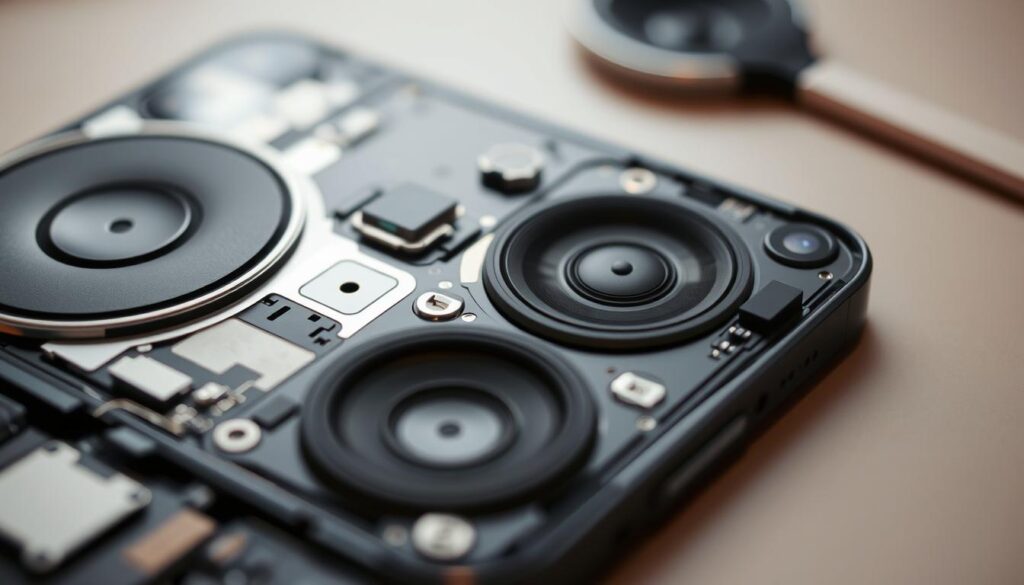
Fixing Speaker Issues After Water Damage
When your iPhone gets wet, the speaker is at risk. You need to act fast. Water damage often leads to iPhone speaker issues. The steps you take right away can greatly affect fixing these problems.
Emergency Steps After Liquid Exposure
If your iPhone gets wet, turn it off right away. This stops short circuits. Remove any accessories or SIM cards to help dry it out.
Gently pat the outside dry with a soft cloth. Avoid rubbing hard, as it could push water inside.
Don’t charge your iPhone or try to turn it on until it’s dry. Charging or turning it on too soon can damage the internal parts, including the speaker.
Effective Drying Techniques for Water-Damaged iPhones
To dry your iPhone, use desiccants or uncooked rice. Put your iPhone in a container filled with these materials, making sure it’s fully covered. Let it sit for at least 48 hours before trying to turn it on.
After drying, check your iPhone’s speaker for debris or corrosion. If you find any issues, you might need to see a professional repair service. They can help with fixing iPhone speaker problems caused by water damage.
Distinguishing Between Earpiece and Main Speaker Problems
To fix iPhone speaker issues, it’s key to know if it’s the earpiece or main speaker. The earpiece handles phone calls, while the main speaker plays music and videos. Getting this wrong can lead to more problems.
Understanding the role of each speaker is vital. The earpiece is at the top for calls. The main speaker is at the bottom for various sounds.
Diagnosing Earpiece Speaker Issues
Problems with phone calls might mean the earpiece is faulty. Try a call to see if your voice is clear. Also, play a voice memo or video with low volume to check sound.
Cleaning the earpiece can fix issues if it’s dirty. Use a soft brush or cotton swab to clean it gently.
Troubleshooting Main Speaker Failures
Issues with media playback might be the main speaker’s fault. Check the volume and mute switch. Test the speaker with different media types.
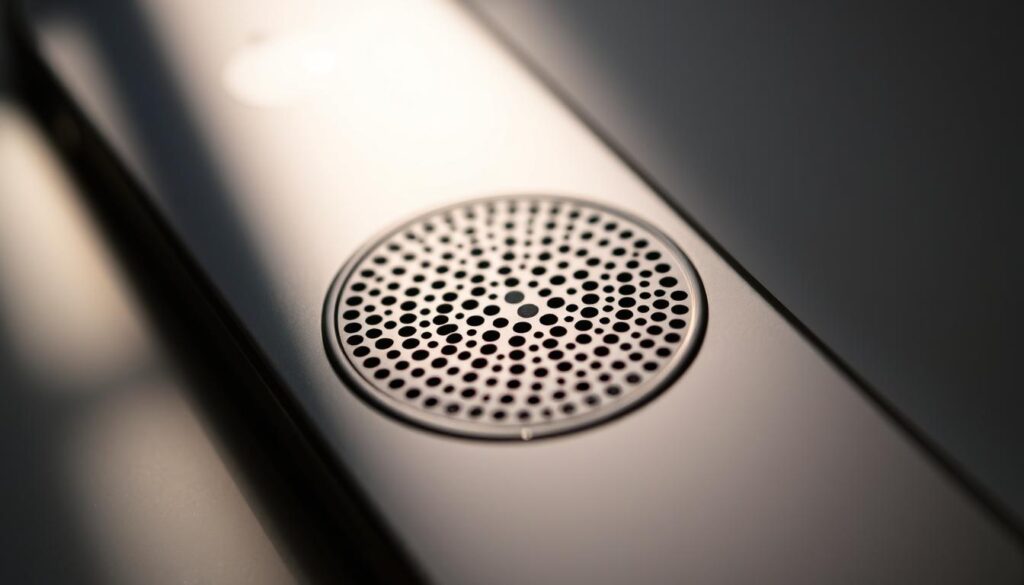
If sound is distorted or missing, it might be a hardware problem. You might need to visit an authorized service center.
Advanced Troubleshooting for Persistent Speaker Problems
Advanced troubleshooting can solve complex iPhone speaker issues. If simple steps don’t work, look deeper into the causes.
Using Diagnostic Sound Tests
Diagnostic sound tests can find out if it’s a hardware or software problem. Use a sound testing app or website to play different frequencies. This checks if your iPhone’s speaker works for all sounds.
For example, an app that plays a range of sounds can help. If the speaker can’t play certain sounds, it might have a hardware problem.
Checking for Hardware Conflicts
Hardware conflicts can cause speaker problems. Check if accessories like headphones or Bluetooth devices are causing trouble. Try removing these and see if the speaker works.
Also, look at the iPhone’s Lightning port for dirt or corrosion. Cleaning it with a soft brush or cloth might fix the issue.
Isolating App-Specific Audio Issues
Some problems might be with a specific app. Play audio from different apps to see if the issue is everywhere or just one app. If it’s just one app, check its settings or update it.
Try resetting the app’s settings or deleting and reinstalling it. This can help figure out if the problem is with the app or the iPhone itself.
| Troubleshooting Step | Description | Potential Solution |
|---|---|---|
| Diagnostic Sound Tests | Play various sound frequencies to test speaker functionality | Identify hardware or software issues |
| Checking for Hardware Conflicts | Inspect connected accessories and iPhone ports for issues | Resolve conflicts by disconnecting accessories or cleaning ports |
| Isolating App-Specific Issues | Test audio playback across different apps | Update, reset, or reinstall problematic apps |
Resolving Speaker Issues with DFU and Recovery Mode
Fixing speaker problems on your iPhone might need advanced steps like DFU or Recovery Mode. These methods can tackle software issues that affect your speaker.
It’s key to know that DFU and Recovery Mode can erase your iPhone’s data. So, make sure you’ve backed up your device recently.
Entering DFU Mode Safely by iPhone Model
Getting into DFU mode changes a bit with each iPhone model. For iPhone 8 and later, press and quickly release the Volume Up button. Then, press and quickly release the Volume Down button. Next, hold the Side button until your screen goes black.
Keep holding the Side button and press the Volume Down button for 5 seconds. Release the Side button but hold the Volume Down for another 5-10 seconds. If done right, your iPhone will be in DFU mode, showing a black screen.
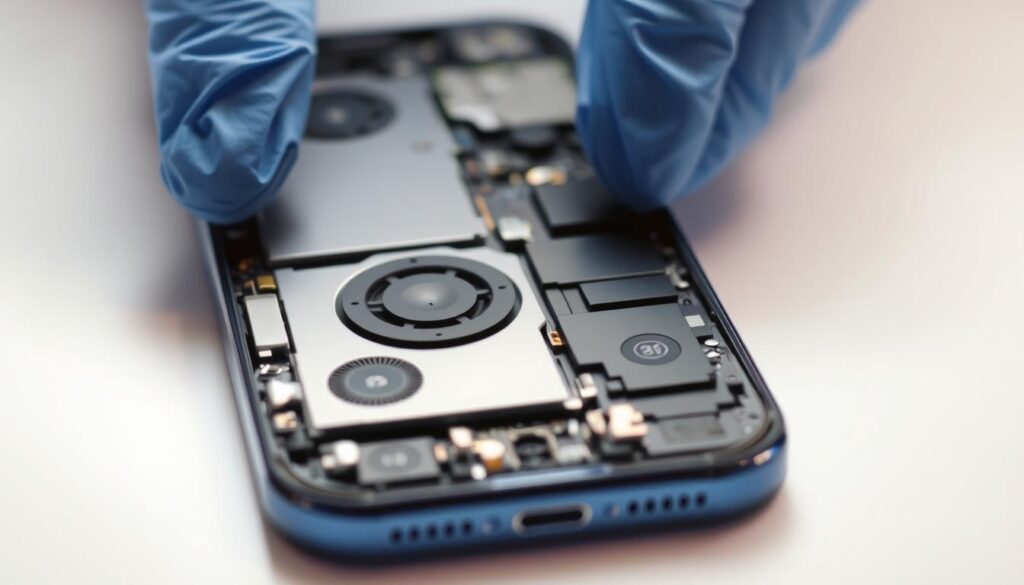
Restoring iPhone Through Recovery Mode
Restoring your iPhone through Recovery Mode can also fix speaker issues. Connect your iPhone to a computer with iTunes, then open iTunes. For iPhone 8 or later, press and quickly release the Volume Up button, then the Volume Down button. Then, hold the Side button until you see the recovery mode screen.
iTunes should find your iPhone in recovery mode and ask to restore it. Just follow the on-screen steps to finish the restore.
Using DFU or Recovery Mode can fix speaker problems on your iPhone. But, if issues keep coming back, you might need to look into hardware fixes or get professional help.
Hardware Solutions for iPhone Speaker Repair
Sometimes, fixing iPhone speaker problems requires hardware solutions. If software fixes don’t work, check the hardware for damage or faults.
It’s important to inspect the iPhone’s speaker parts. Physical damage often causes speaker problems.
Identifying Physical Damage to Speaker Components
Look closely at the speaker grills and around them for wear, corrosion, or damage. Also, check for dirt or debris that might block the speaker.
For a closer look, use a magnifying glass or a high-resolution camera. This helps spot small damage or corrosion on the speaker parts.
DIY Speaker Replacement: Tools and Considerations
If you find damage, you might need to replace the speaker yourself. You’ll need tools like a pentalobe screwdriver, tweezers, and a spudger. For help, check iPhone repair tips for step-by-step guides.
Make sure you have the right replacement speaker before starting. Also, follow safety tips to avoid damaging your iPhone.
Using Compressed Air for Deep Cleaning
For issues like dirt or dust, compressed air can help. Gently spray the air around the speaker grills to remove debris.
Be careful not to push debris deeper or damage the speaker with too much air. Move the can around to clean all areas thoroughly.
When to Seek Professional Repair Services
If your iPhone speaker problems keep coming back, it’s time to get help from pros. These issues might need special tools and skills.
Apple Store vs. Authorized Service Providers vs. Third-Party Shops
You have a few choices for fixing your iPhone: Apple Stores, authorized service providers, or third-party shops. Apple Stores use real parts and give a warranty. Authorized service providers are good for quality and price. But, third-party shops might be cheaper but the quality and warranty can vary.
Think about your iPhone model, the problem, and your budget when choosing.
Estimated Costs and Repair Timeframes by Model
The cost and time for fixing an iPhone speaker can change a lot. It depends on the model and the repair needed.
| iPhone Model | Estimated Repair Cost | Repair Timeframe |
|---|---|---|
| iPhone 12 and later | $100-$200 | 1-3 business days |
| iPhone 8 to iPhone 11 | $80-$180 | 1-2 business days |
| iPhone 7 and earlier | $60-$150 | 1 business day |
These prices are just estimates. They can change based on the repair service and your iPhone’s issue.
Troubleshooting Specific iPhone Models
When dealing with iPhone speaker problems, the model is key. Each iPhone has its own speaker setup and possible issues.
Fixing Speaker Issues on Newer iPhones (iPhone 12-15)
Newer iPhones, like the iPhone 12 to 15, have better speakers. But, you might still face issues like distorted sound or low volume. First, make sure your iPhone is updated to the latest iOS.
If the problem doesn’t go away, try resetting all settings. Also, check the speaker grills for dirt.
Specific to these models, turning off sound enhancements can fix audio issues. Also, test different apps to see if the problem is app-related.
Solutions for Older iPhone Models (iPhone 7-11)
Older iPhones, like the iPhone 7 to 11, might have crackling sounds or no sound at all. A simple restart or cleaning the speaker grills can help. For lasting problems, check for water damage or physical harm to the speaker.
Resetting the audio settings to default can also help. Sometimes, custom EQ settings can cause sound problems.
Legacy iPhone Speaker Repairs (iPhone 6 and Earlier)
Fixing speaker issues on older iPhones, like the iPhone 6 and before, can be tough. These devices have older tech and might need professional help or replacement if damaged.
In some cases, replacing the speaker component is needed. This requires careful thought and technical skills, especially for models with soldered parts.
Conclusion
Fixing iPhone speakers can be easy if you know what to do. First, understand how your iPhone’s speakers work. Then, find out what problems they might have.
We’ve shown you many ways to fix your iPhone’s speakers. This includes simple fixes and more complex repairs. If none of these work, it’s time to get help from Apple or a certified service.
Fixing your iPhone’s speakers takes patience and careful steps. By using the tips we’ve given, you can fix common issues. This way, you’ll get back to enjoying clear, clean sound on your iPhone.
FAQ
Why is my iPhone speaker not working?
There are many reasons why your iPhone speaker might not work. It could be a software glitch, hardware damage, or debris in the speaker grills. Try checking your volume settings, restarting your iPhone, and cleaning the speaker grills first.
How do I fix distorted or crackling audio on my iPhone?
Distorted or crackling audio can come from software or hardware issues. Try updating your iOS, disabling sound effects and EQ settings, or resetting all settings. If it still doesn’t work, you might need to see an authorized service provider.
What should I do if my iPhone has been exposed to water and the speaker is not working?
If your iPhone got wet, turn it off and remove accessories. Dry the outside and try using silica gel packets or uncooked rice to absorb moisture. Don’t use heat to dry it, as it can damage your iPhone further.
Can I replace my iPhone speaker myself?
You can try to replace your iPhone speaker yourself, but it’s safer to get professional help. You’ll need special tools and knowledge to avoid damaging your device more.
How much does it cost to repair an iPhone speaker?
Repairing an iPhone speaker costs vary based on the model and repair service. Expect to pay between to 0 or more, depending on the repair’s complexity and the provider’s fees.
Why is my iPhone’s earpiece speaker not working, but the main speaker is fine?
If only the earpiece speaker isn’t working, it might be a specific issue or a software glitch. Try restarting your iPhone, checking for debris in the earpiece, or resetting all settings.
How do I test my iPhone speaker to identify the issue?
Test your iPhone speaker by playing different audio types, like music or videos. Check if the sound is distorted or not working. You can also use diagnostic sound tests or visit an authorized service provider for a detailed diagnosis.
Will updating my iOS version fix my iPhone speaker issue?
Updating your iOS might fix software-related speaker issues. It’s a good idea to keep your iPhone’s software up to date.
